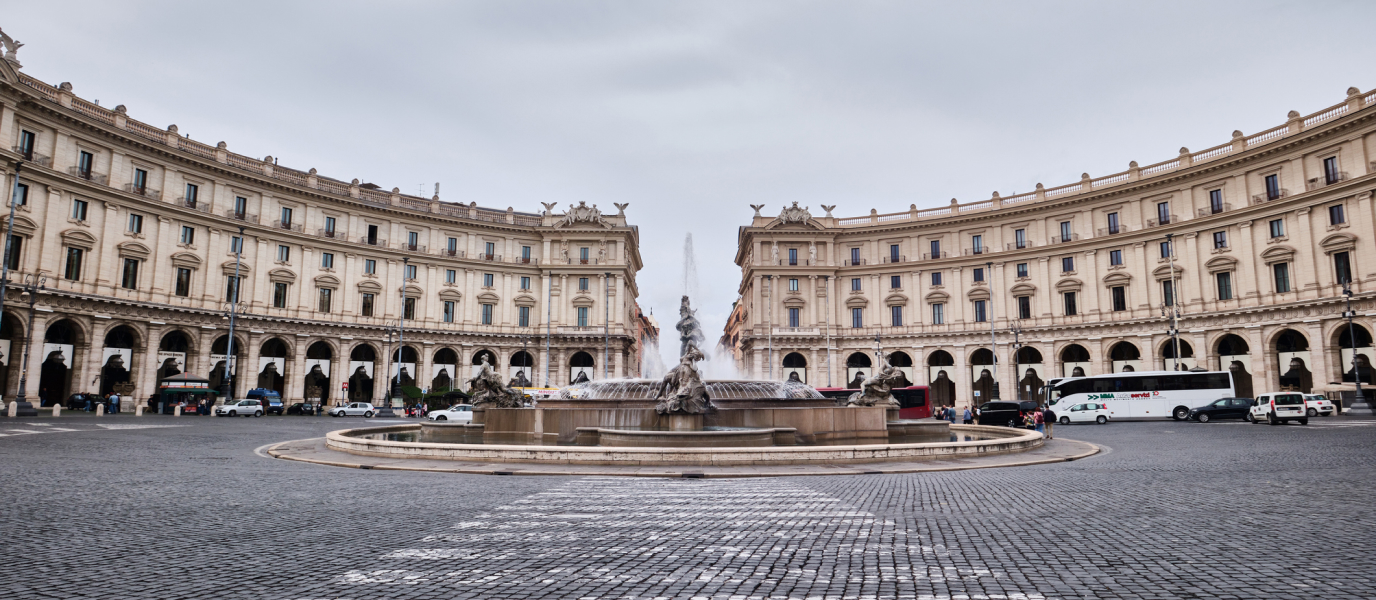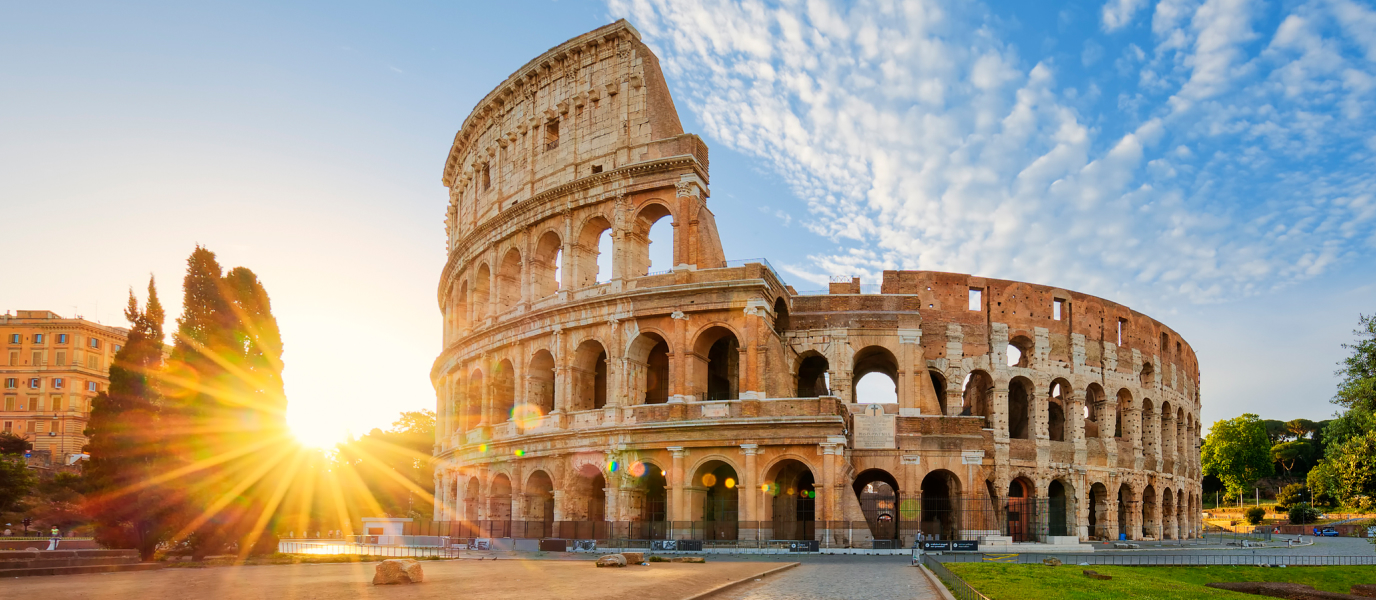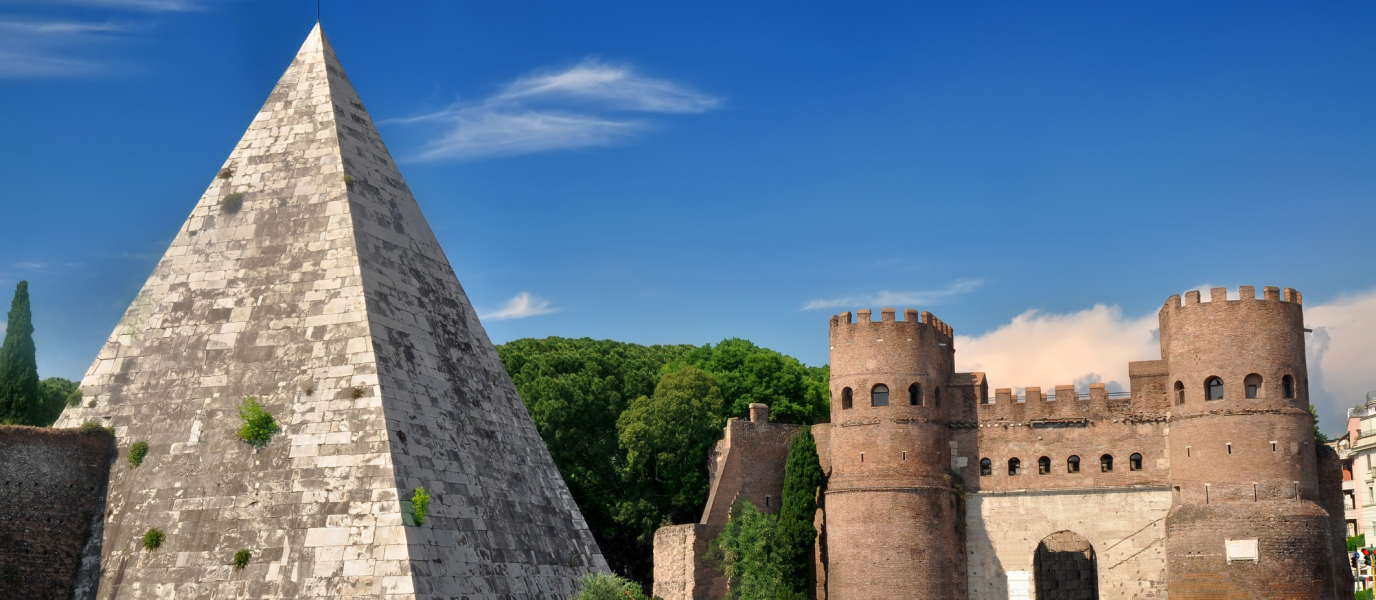Rome’s historical transformation never fails to impress all who visit the Italian capital. It’s easy to imagine ourselves walking through ancient galleries, stadiums and temples, strolling along cobbled streets dressed in a toga or watching a gladiatorial fight to the death. The jewel in modern Rome’s crown is its architectural heritage – something which is impossible to fully appreciate without first learning something of the city’s long and intense history.
Piazza della Repubblica, celebrating the unification of Italy
To really understand what Piazza della Repubblica means to the Romans, we have to go back to the 3rd century and the 50-year economic, political and social crisis that resulted in Emperor Diocletian’s rise to power. Diocletian wanted to boost the Empire’s strength and also began a construction programme throughout the capital that included the Baths of Diocletian, the largest public baths in Ancient Rome. Inside they were clad with marble and mosaics and were equipped with changing rooms, theatres, gardens and various pools with hot, warm and cold water.
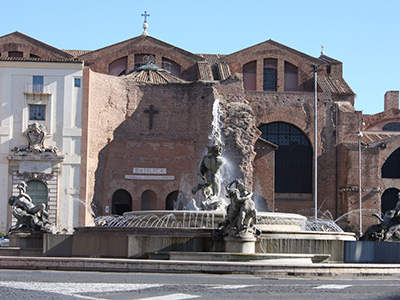
Diocletian abdicated after the works were completed in the year 305. He was accused of murdering thousands of Christians who were condemned to hard labour building the baths. After more than a hundred years of use, a cut in the water supply by the Barbarians plunged the baths into a millennium of ruin. Pope Pius IV decided to raise the Basilica of Santa Maria degli Angeli e dei Martiri at the site, in memory of the Christians who died there.
Diocletian’s baths had an exedra or outdoor semi-circular area with seats that functioned as a gathering place. City restructuring and improvement works following the unification of Italy in 1871 resulted in a commemorative piazza being built on the ancient exedra to celebrate the new republic. Hence, Piazza della Repubblica is also known as Piazza dell’Esedra.
What to see in Piazza della Repubblica
The piazza is part of a huge roundabout and has cobbled streets, a fountain in the centre and impressive buildings around the edges. The long and wide avenue called Via Nazionale leaves from the piazza and connects the area around Rome’s main train station with the historical centre, lined along the way with plenty of shops, cafes and restaurants as well as the Repubblica metro station, making it an important artery through the city.
Despite its roundabout location, the piazza is actually semi-circular. The porticos around the piazza were built in memory of the ancient exedra, and the basilica was built inside part of the ruined baths.
Monuments in Piazza della Repubblica: La Fontana delle Naiadi
The Fountain of the Naiads stands in the centre of Piazza della Repubblica and used to be connected to the Aqua Marcia aqueduct. Pope Pius IX commissioned it between 1870 and 1888 in honour of a visit by German Emperor Wilhelm II. The four original lions were replaced in 1901 by four naiads or nymphs: the naiad of the lakes (holding a swan), the naiad of the rivers (lying on a river beast), the naiad of the oceans (riding a horse that symbolises the sea) and the naiad of groundwater (lying atop a dragon-like creature).
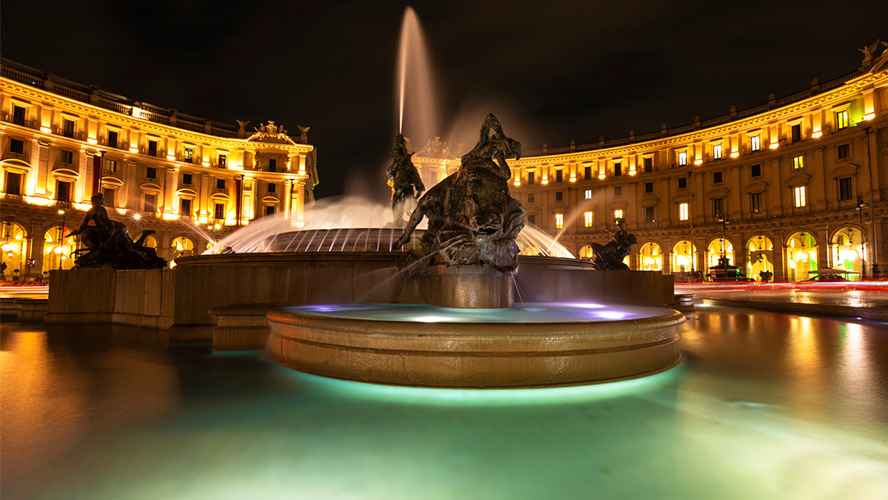
The naked figures of the naiads shocked the Romans of the time (and the Pope) though efforts to remove the fountain from the piazza were made in vain. Some even wanted to erect a new sculpture in the centre of the fountain. The first option was a depiction of three humans, a dolphin and an octopus in battle. The citizens of Rome didn’t understand the confusing piece and it was eventually moved to the gardens of Piazza Vittorio Emanuele II and replaced with a sculpture of Glauco (a sea god in Greek mythology) embracing a fish, symbolising the triumph of humanity over nature.
Around the piazza
Among the buildings of note around the piazza is the Basilica of Santa Maria degli Angeli e dei Martiri or St. Mary of the Angels and the Martyrs. What seems like a ruin from the outside is spectacularly intact once through the doors. It has huge frescoes and different coloured marble columns, and it’s the only Renaissance church in all of Rome (entrance is free). At the same site you’ll find the Baths of Diocletian, which in their day had a capacity of 3,000 people. The ancient baths are now one of the headquarters of the National Roman Museum.
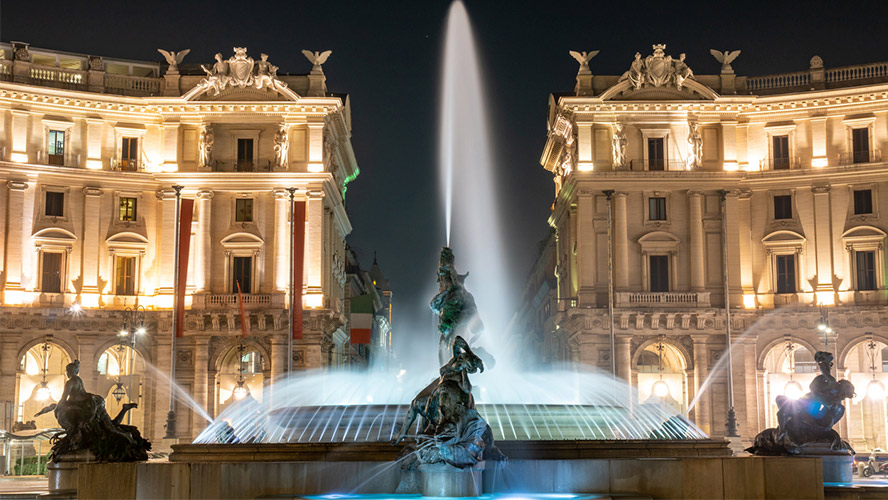
Cross the street in front of the baths to visit the Palazzo Massimo alle Terme, a Renaissance palace built between 1883 and 1887 which was a Jesuit college until 1960. Now another base for the National Roman Museum, today it safeguards some of the most valuable archaeological collections in the world.
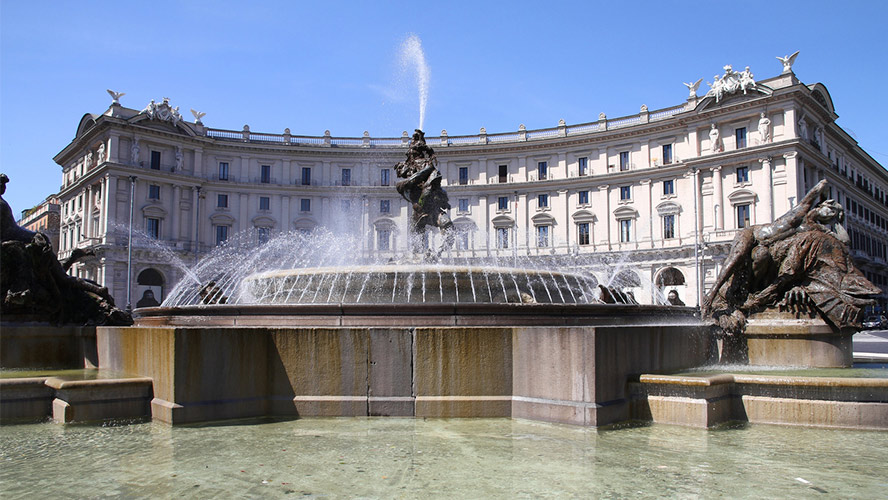
The Church of Santa Maria della Vittoria was erected to commemorate the victory of Ferdinand II at the Battle of White Mountain and sits just a stone’s throw from Piazza della Repubblica. Its modern claim to fame was its starring role in the book (and film adaptation) Angels and Demons by Dan Brown. The church contains Bernini’s Ecstasy of Saint Teresa, one of the most outstanding examples of Baroque sculpture.
























































